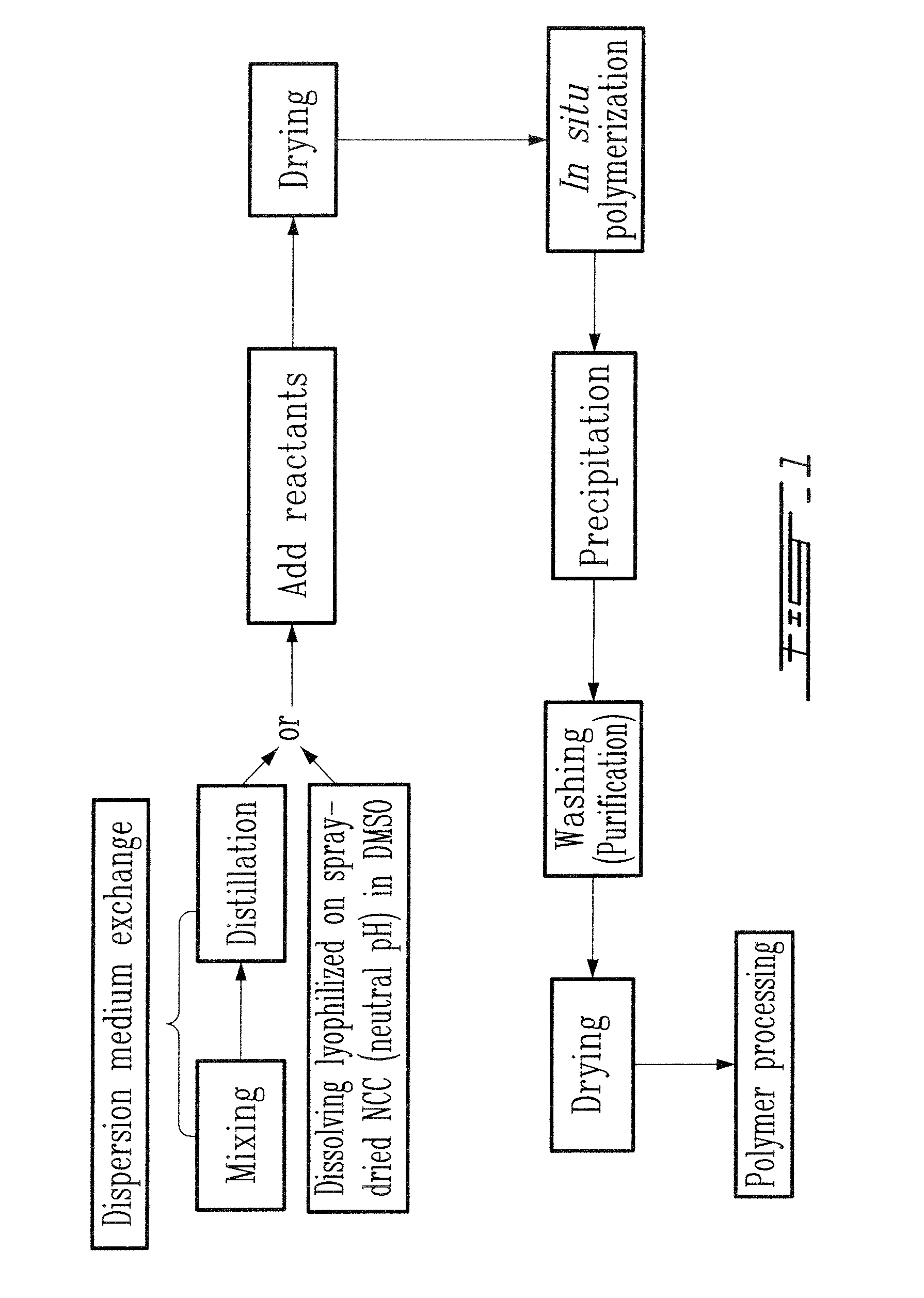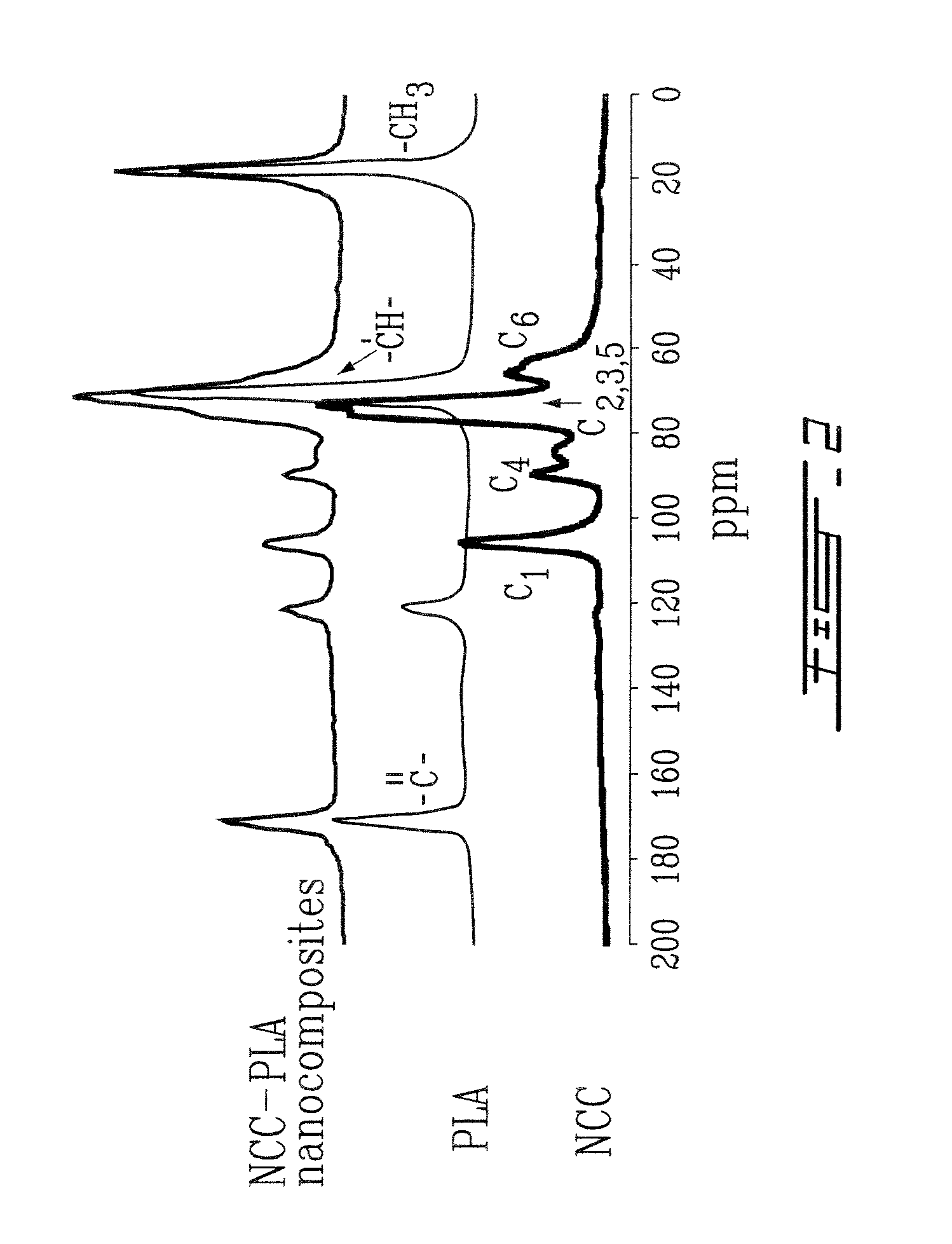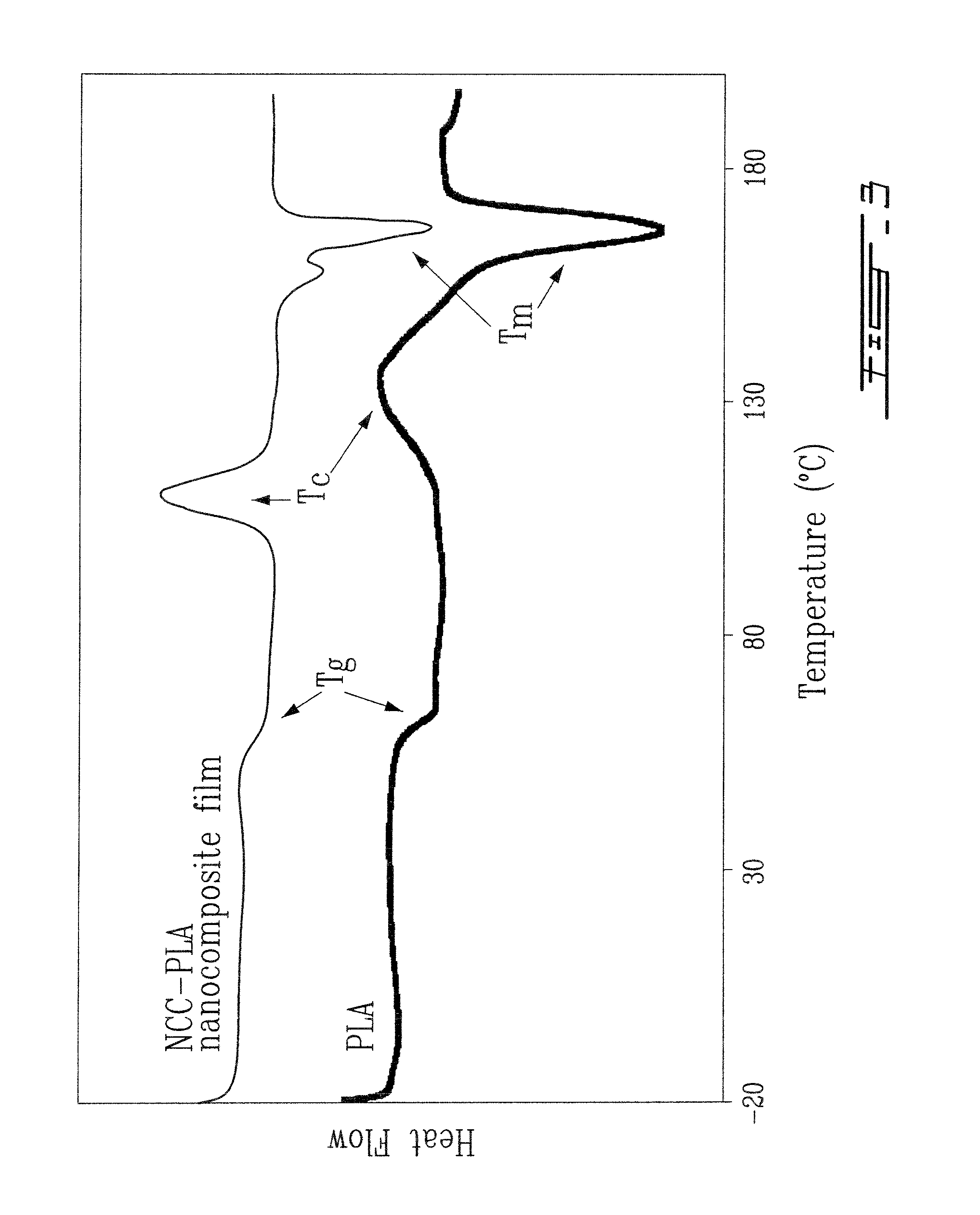Nanocomposite biomaterials of nanocrystalline cellulose (NCC) and polylactic acid (PLA)
- Summary
- Abstract
- Description
- Claims
- Application Information
AI Technical Summary
Benefits of technology
Problems solved by technology
Method used
Image
Examples
example 1
[0048]NCC-PLA nanocomposite materials prepared using the in situ polymerization approach described in this invention produce particles that have a typical hydrodynamic diameter of an equivalent sphere (as determined by a Zetasizer) equal to 60.2+0.9 nm (dispersed in DMSO). The nanocomposite material disperses perfectly in typical organic solvents indicating excellent hydrophobicity. The mass ratio of grafted polymer to that of NCC is typically >80%. Solid-state 13C nuclear magnetic resonance (NMR) confirms the successful synthesis as described in FIG. 2.
example 2
[0049]The physical, mechanical and barrier properties of polymers or polymer composites are dependent on the solid-state morphology and crystallinity of the material, and processing of these composite materials can significantly impact these properties. The NCC-PLA nanocomposite material described in this invention may be processed using polymer processing techniques (e.g., film casting, extrusion / blow-moulding, injection or compression moulding, fibre spinning, etc.) to produce films, fibres, filaments and, in general, any 3-dimensional object. FIG. 3 depicts the differential scanning calorimetric responses of NCC-PLA nanocomposite films containing 5.3% w / w of NCC. These nanocomposite films exhibit significantly improved structural and thermal stability, as well as lower hygroexpansivity, compared to neat PLA films. This unique behaviour results from the ability of NCC to initiate controllable crystallization in the amorphous PLA, while maintaining the NCC structure in unperturbed ...
PUM
| Property | Measurement | Unit |
|---|---|---|
| Temperature | aaaaa | aaaaa |
| Temperature | aaaaa | aaaaa |
| Fraction | aaaaa | aaaaa |
Abstract
Description
Claims
Application Information
 Login to View More
Login to View More - R&D
- Intellectual Property
- Life Sciences
- Materials
- Tech Scout
- Unparalleled Data Quality
- Higher Quality Content
- 60% Fewer Hallucinations
Browse by: Latest US Patents, China's latest patents, Technical Efficacy Thesaurus, Application Domain, Technology Topic, Popular Technical Reports.
© 2025 PatSnap. All rights reserved.Legal|Privacy policy|Modern Slavery Act Transparency Statement|Sitemap|About US| Contact US: help@patsnap.com



